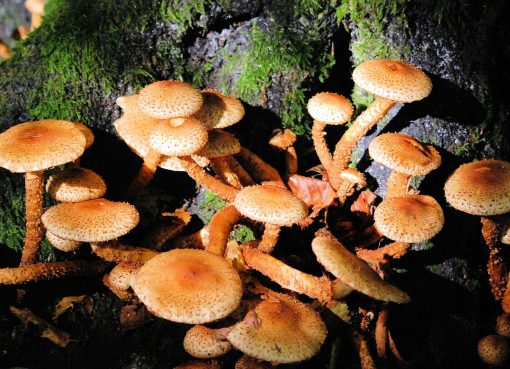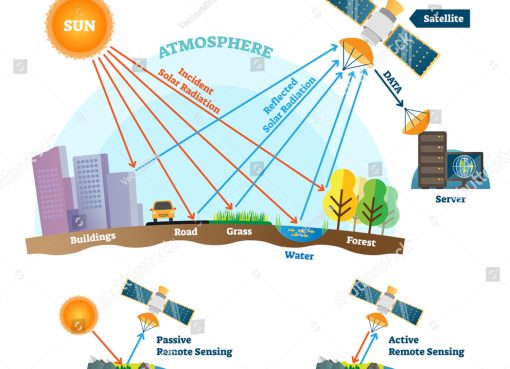K. joshi1; m. dasgupta2; k. ahmed3
1. M.Sc scholar ; 2. Assistant Professor; 3. Professor & head
Email: miss.kanchan.joshi7@gmail.com; mohua.dgupta@gmail.com; kahmedj@gmail.com
Department of Animal Reproduction and Gynaecology, College of Veterinary Science, Assam Agricultural University
importance of dogs in our lives
Dogs have been an integral part of our society since time immemorial. The history of the relationship between human and dog started from hunting wild animals for food and went through herding to being a companion, a guide for blind people, a part of police squad, and many more. Globally, there are different sorts of dog breeds serving different purposes. However, in the past few decades, the need for dogs as a companion animal has increased several folds and the emerging societal changes for the desire of exotic breeds have led to the transportation of dogs over a long distance which has popped up into a cumbersome and costly task. Thereby experiments of cross breeding and artificial insemination are taking place for an awfully long time in dogs and effecting tremendous progress in the field of canine reproduction. However, in canine reproduction particularly, artificial insemination has opened up a new world of breeding possibilities and allowed the breeder to impregnate the medically disabled bitch with the procured desirable semen over the globe. This modern reproductive technology also caused a reduction in sexually transmitted diseases and the stress level of the animals attributed to transportation for mating. Meanwhile, crossbreeding has heralded development of new breeds by exploiting the germplasm of selective breeds to the fullest and at the same time some other native breeds face extinction due to negligence which urge into a huge demand to preserve the germplasm before they vanish from the face of the earth. On the other hand, till date most of the crossbreeding is limited to natural mating due to lack of scientific knowledge of artificial insemination among the dog owners and availability of fresh and chilled semen. The fresh and the chilled semen can be stored for a limited period of days. Considering all the above factors, cryopreservation of dog semen could be an easy, cost-effective way that may allow worldwide access and availability of the frozen semen from sires for a longer period even after they decease (Pezo et al., 2017).
MYSTERY AND IMPLEMENTATION OF CRYOPRESERVATION
Cryopreservation is the third-generation technique which facilitates preservation of good quality semen for a longer period, and ensures easy and cost-effective transport of desired semen over long distances and preservation of good quality germplasm of a stud for years together (Kutzler et al., 2005). Briefly, it is a process of freezing semen at -196 ºC in liquid nitrogen and can be used later, whenever required. However, in this technique, there are some specific requirements that must be fulfilled for a successful cryopreservation, as the purpose is not merely storing the semen sample but also maintaining the fertilizing capacity of the sperm and utilizing it later for successful fertilization.
Prior to cryopreservation, the semen ejaculate must be analysed for certain characteristics to assess whether it is fit for use or not. This includes routine semen analysis, viz. macroscopic and microscopic tests like volume, colour, consistency, initial motility, mass motility, pH and concentration. Apart from these, there are a wide variety of other advanced evaluation methods available to assess the semen quality more precisely like Hypo-Osmotic swelling test (HOST), Zona Pellucida binding Assay (ZBA), fluorescent probes and flow cytometry and computer assisted sperm analysis (CASA). After the semen is declared fit for further processing, it is extended with the dilutor. Composition of a dilutor/extender needs to be calibrated precisely. Even a small change in the constituents can gravely affect the whole process. Basically, a dilutor is composed of water as a solvent, buffer to regulate pH, sugar as an energy source, an organic material like egg yolk or milk to prevent cold shock, a cryopreservative like glycerol or DMSO, an antibiotic to control microbial growth and additives to improve fertility. Dog semen is composed of three portions. The first portion mainly comprises of prostate secretion with an admixture of epithelial cells, urine, bacteria, and sperm cells; the second portion varies from 0.5 to 2 mL and is sperm-rich and the last portion comprises mainly of prostatic gland secretion with a volume variable up to 30 ml (Kutzler et al., 2005). Seminal plasma is considered detrimental to survivability of sperm during cryopreservation. Hence, seminal plasma must be removed by centrifugation and discarding the supernatant. The sediment consisting of sperm cells is utilized for further processing that includes extension, packaging, equilibration at 4 °С for 4 hours, freezing and storing.
“Timing is everything……………” WHEN TO DO ARTIFICIAL INSEMINATION?
Bitches are mono-estrous animals, i.e., they come in heat once or twice a year. Due to this peculiarity, the correct timing of insemination is particularly important. The bitch usually presents a relatively long follicular phase and there is considerable variability in the onset of estrus behaviour and acceptance of the male, making it difficult to determine occurrence of the LH surge and onset of ovulation. However, there are several tests available to determine appropriate timing of insemination like vaginal cytology, progesterone estimation, vaginal endoscopy and ultrasonography (Wright, 1990). Generally, ovulation occurs 48 hours after preovulatory LH peak. Therefore, careful planning and synchronizing of both the time of mating and ovulation can be a key step in successful canine artificial insemination. Under such circumstances, frozen/thawed semen is found to be more advantageous compared to fresh and chilled semen. Basically, insemination with fresh / chilled semen needs to be performed on the day of ovulation, and a second insemination 2 days later; whereas insemination with frozen/thawed semen is performed 2 days after ovulation, and the second insemination 48 h later, considering the time required for premature oocytes to mature in the oviducts (Linde-Forsberg, 1995).
HOW TO DO ARTIFICIAL INSEMINATION?
Packaged straws or pellets are thawed prior to artificial insemination at 70 ºC for 8 seconds or 37 ºC for 30 seconds. Insemination can be done either deep vaginal or intra uterine. For deep vaginal insemination, a simple plastic catheter with disposable syringe can be utilized or commercial catheters are also available. On the other hand, intrauterine insemination can be done surgically or non-surgically. Non-surgical method is like the deep vaginal method involving use of an outer plastic catheter and an inner metal catheter as a guide or alternatively, an endoscope-assisted vaginoscopic method can also be employed using a cysto-uretheroscope. Surgical method of intrauterine insemination is considered unethical and hence not used for the purpose. It involves laparoscopy and laparotomy after induction of anaesthesia. Intrauterine insemination is more successful compared to deep vaginal insemination with frozen semen.
CONCLUSION:
Success with artificial insemination of frozen dog semen has been limited and the sublimed reasons are associated with ordered logical studies of cryopreservation and identification of the exact time of fertilization in dog. Therefore, this article is to highlight the neglected areas of cryopreservation in dog and creating awareness among dog breeders and researchers for adapting new and advanced technologies for better and safe utilization of the limited gene pool to preserve the varied breeds, and to reciprocate all the love and loyalty to our little friends.
Reference:
Kutzler, M.A. (2005). Semen collection in the dog. Theriogenology, 64(3):.747-754.
Linde-Forsberg, C. (1995). Artificial insemination with fresh, chilled extended and frozen-thawed semen in the dog. In Seminars in Veterinary Medicine and Surgery Small Animal, Vol. 10, pp. 47-48. WB Saunders Co.
Pezo, F., Cheuquemán, C., Salinas, P. and Risopatrón, J. (2017). Freezing dog semen using− 80° C ultra-freezer: Sperm function and in vivo fertility. Theriogenology, 99: 36-40.
Wright, P.J. (1990). Application of vaginal cytology and plasma progesterone determinations to the management of reproduction in the bitch. Journal of Small Animal Practice, 31(7): 335-340.




